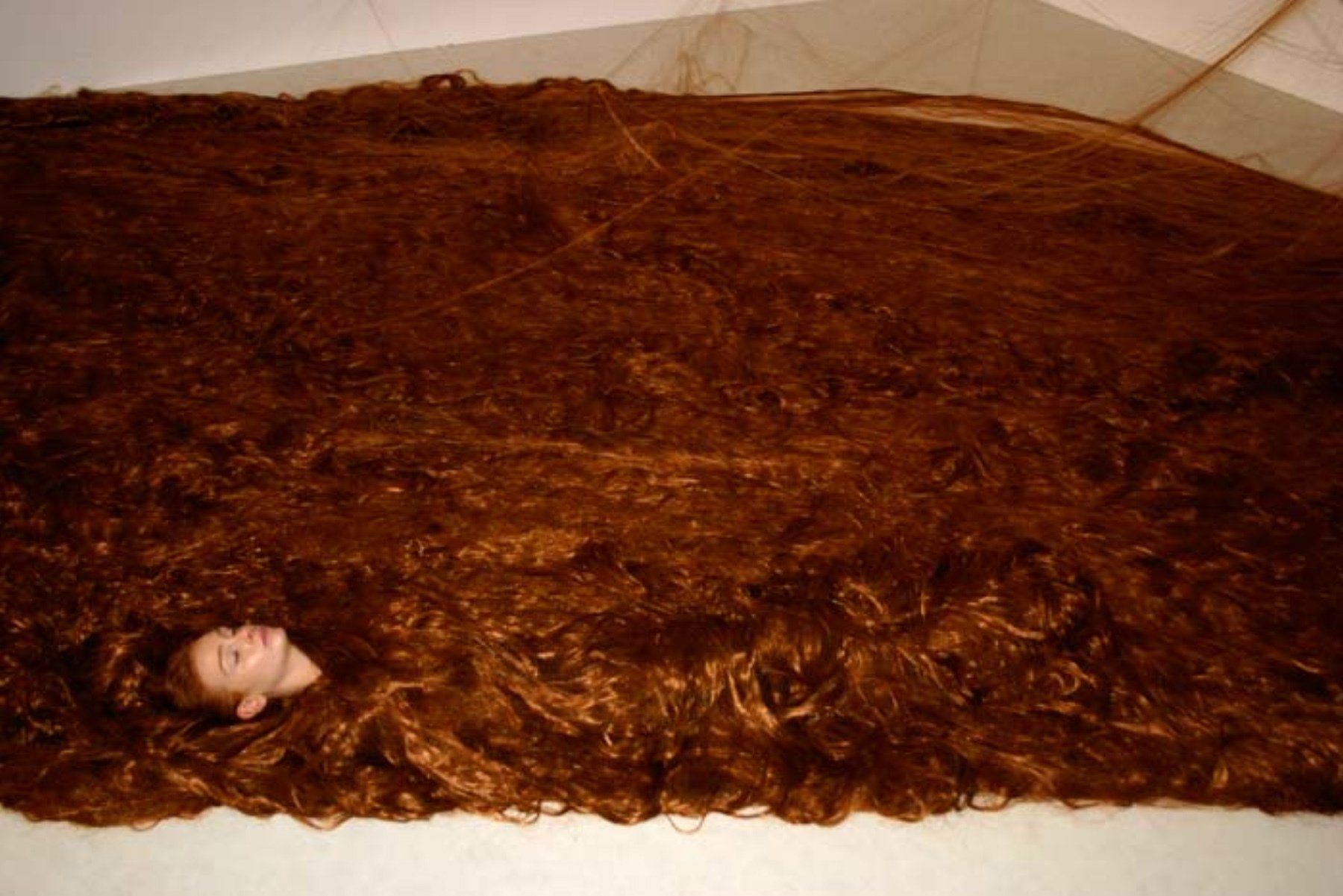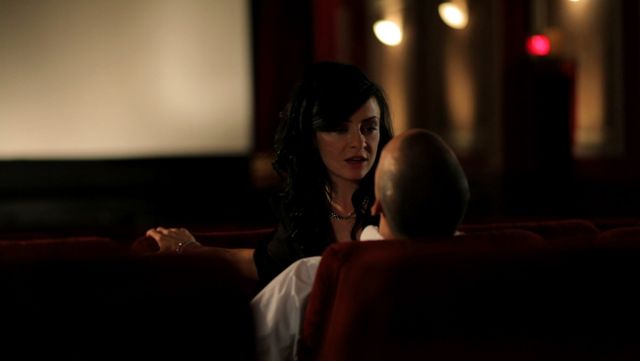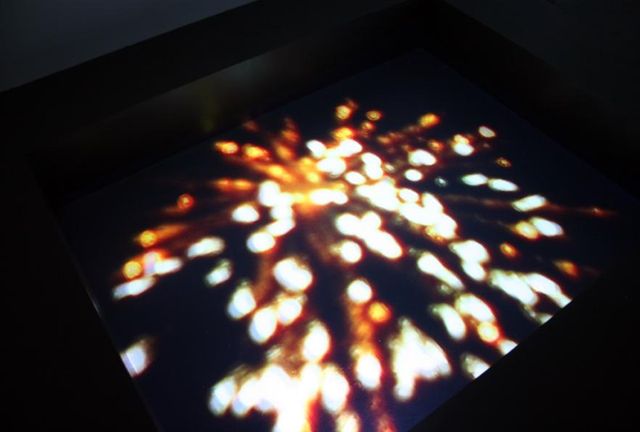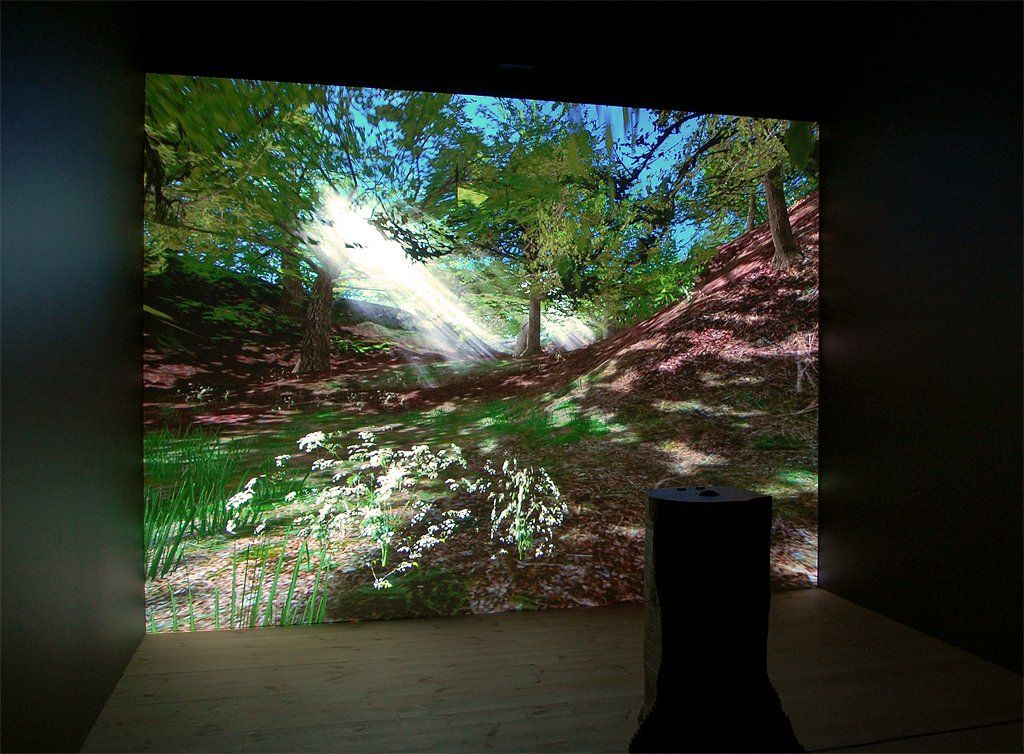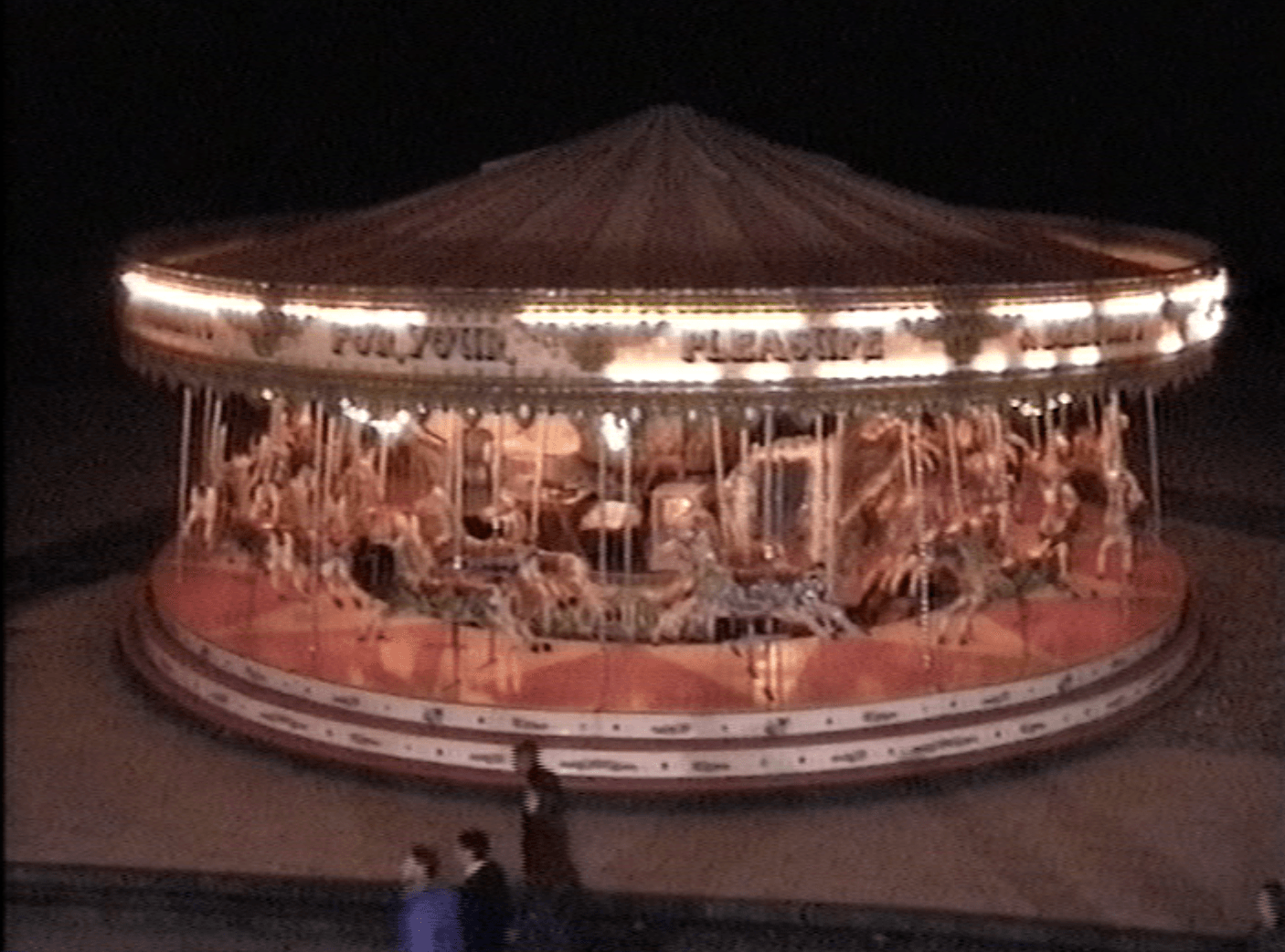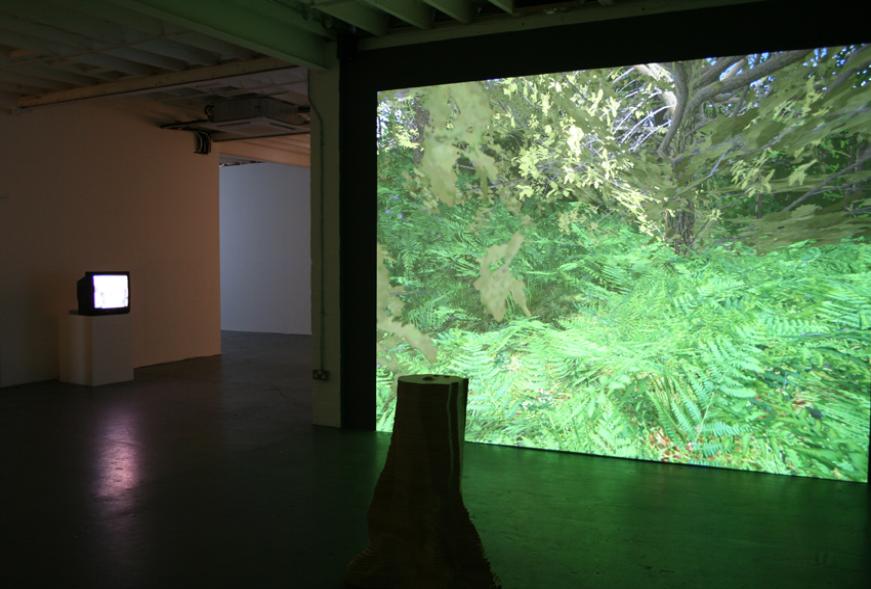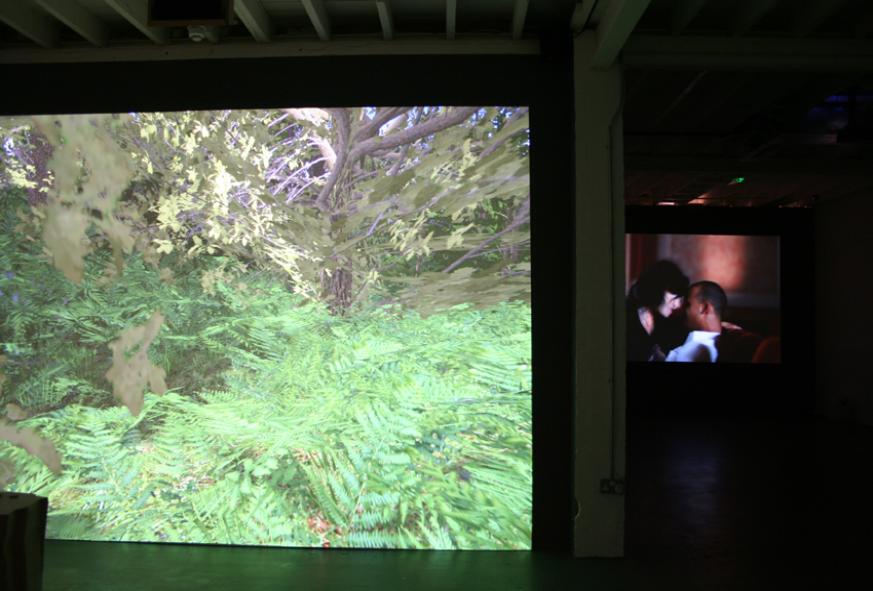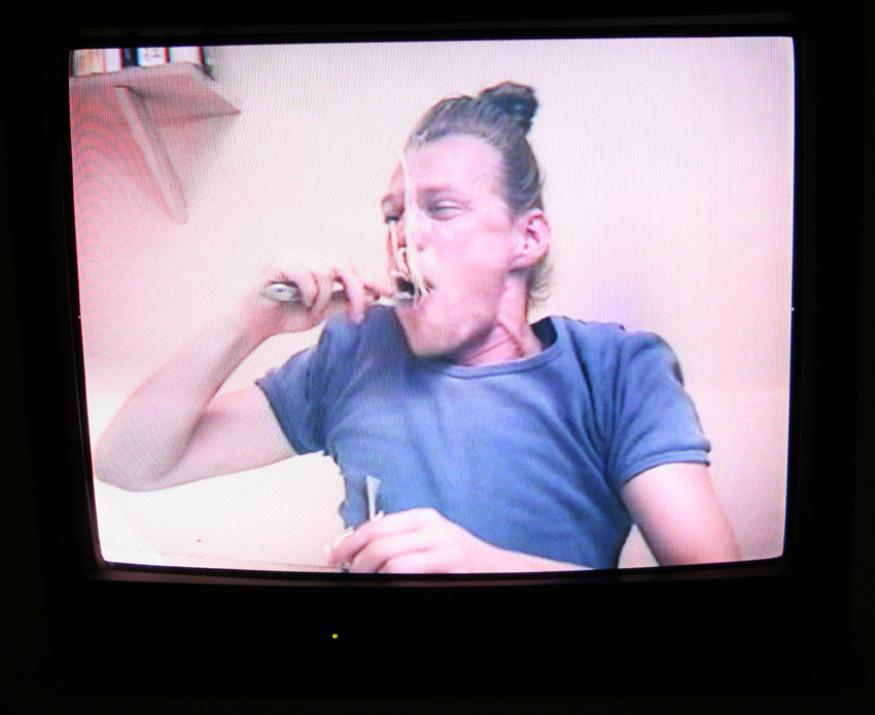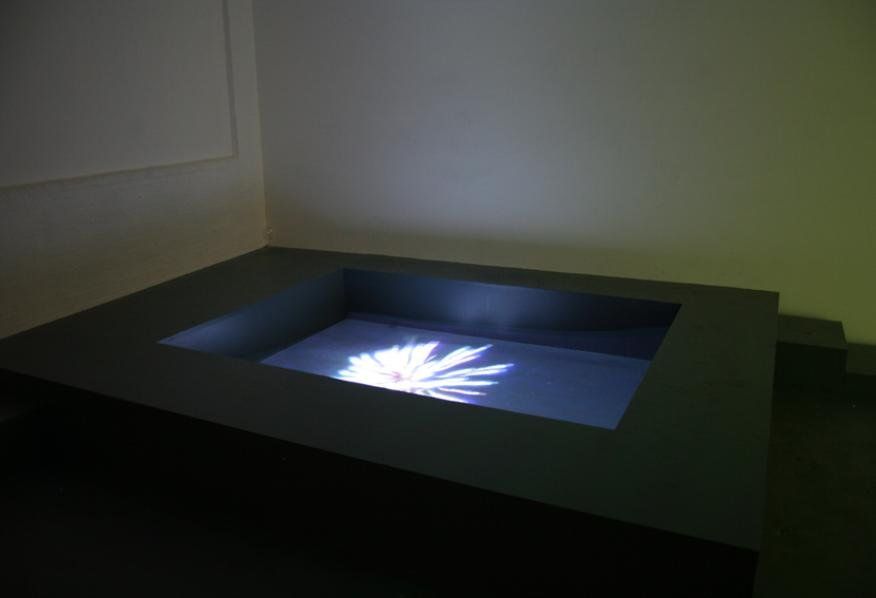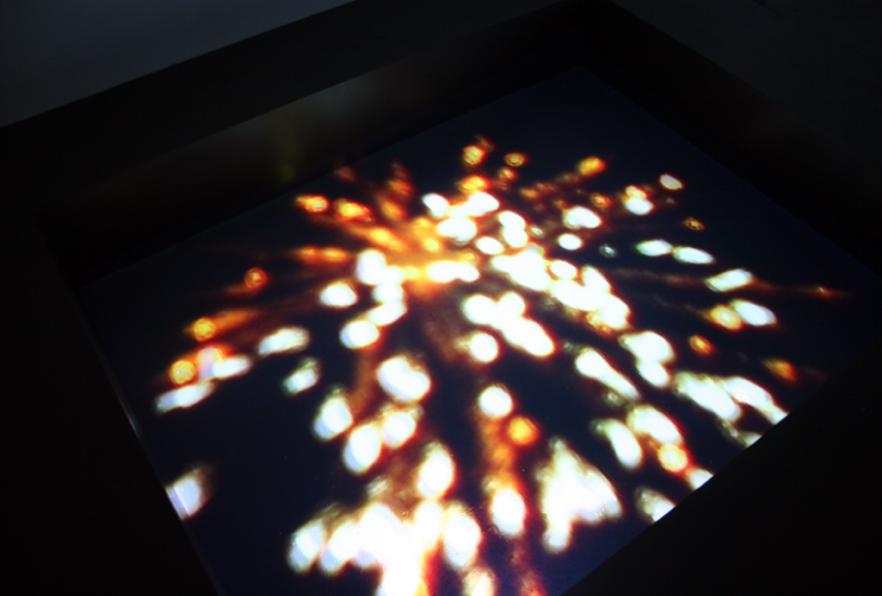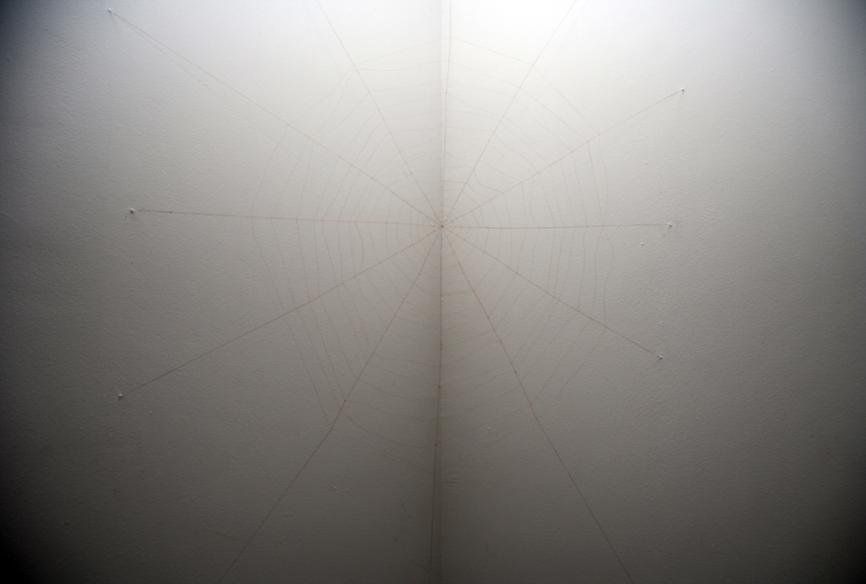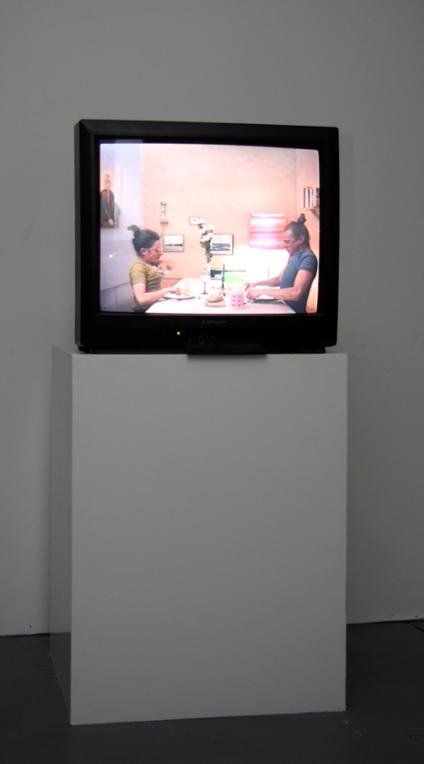ALICE ANDERSON
Alice Anderson uses her triple cultural background (French, Algerian and British) to create Art based on her fictional childhood memories. Working from sculpture to film, she presents Time as her most significant working material. Memory is shown as the ‘master of fiction’ as she plays with the dislocation of time in the same way that children construct parallel worlds. Her work triggers certain recollections reinventing memories of her childhood. For Smoke on the Water, Anderson will create a lattice made from dolls hair, a spider’s web reminiscent of an empty house. Alice Anderson's WEB sculpture is a response to her Fictional Childhood Memories performances started in 2010 in which she replays her rituals made at her six-year- old self. “I remember the terrible fears I used to have as a child left alone at home for many long hours waiting for the return of my mother. At that time I invented rituals to calm my anxieties and to ward off the fact that Time was an intangible. These rituals consisted of attaching parts of my body and objects after undoing seams. This obsession became so bad that later I started to the same thing using her hair.”
Alice Anderson (b 1976) studied with Christian Boltanski at L'Ecole des Beaux-Arts, Paris, and graduated from Goldsmiths College, London, where she lives and works. In 2010 her work was exhibited at Tate Modern London, Centre Georges Pompidou, Paris, Nichido Contemporary Art, Tokyo, Riso Art Museum, Sicily, National Taiwan Museum, Taipei, Fondation Agnes b, Paris, Cinémathèque Française, Paris, Busan Biennale, South Korea, and Riflemaker, London
